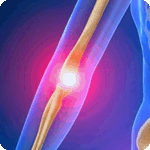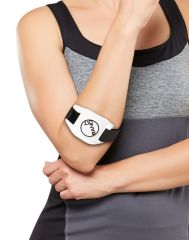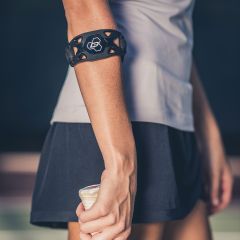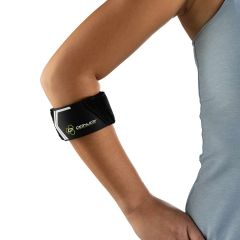Tennis Elbow

Tennis elbow, also known as lateral epicondylitis, is an overuse injury that occurs on the outside (posterior) of the elbow. As its name suggests, it commonly occurs in tennis players. However, anyone who consistently uses his elbow or puts the elbow under strain can develop lateral epicondylitis. Tennis elbow occurs when the tendons that attach your forearm muscles to the bone begin to get damaged. Over time, this leads to inflammation and irritation, causing pain on the outside of the elbow. Tennis elbow is similar to golfer's elbow - the only difference is the location on the arm (the pain is on the inside of the arm in golfer's elbow).
Tennis Elbow Causes
As mentioned above, tennis elbow is typically caused by overuse and repetitive strain to the elbow. Certain activities can put an individual at higher risk, such as tennis, golf, baseball, painting, and carpentry. Car mechanics and chefs have a higher incidence of tennis elbow than the average person. Tennis elbow may also be caused by a direct trauma to the elbow, such as falling on the elbow. Age can be a factor in tennis elbow - most people that get tennis elbow are between 30 and 50 years old.
Tennis Elbow Symptoms
Tennis elbow symptoms include pain on the outside of the elbow that gradually increases over the course of several weeks or months. In some cases, the onset of pain is immediate, though this is much rarer. The pain may intensify when squeezing or gripping objects, lifting, or using utensils and tools. Other symptoms include weakness and stiffness.
Tennis Elbow Treatment
As with any injury, your doctor will be the best source of advice on the appropriate treatment method for your situation. Immediate tennis elbow pain management often begins with rest. Abstaining from activities that increase elbow pain helps give your elbow time to recover. Ice and anti-inflammatory medications such as ibuprofen and aspirin may also be used to help manage pain and inflammation.
Wearing a tennis elbow brace can help alleviate pain caused by tennis elbow and reduce strain on the joint. They can also help prevent tennis elbow from reoccurring after it has healed. Your doctor may also recommend physical therapy to help strengthen and stretch your forearm muscles. Stronger muscles help reduce pressure on your tendons, decreasing your chances of tennis elbow. If you play tennis or participate in other activities that place stress on the elbow, check to make sure that your equipment is not worn out and that you are using the proper techniques.
Your doctor may suggest steroid injections if conservative treatments do not reduce pain. If show no signs of improvement are recorded after 6-12 months, your doctor may recommend surgery.








